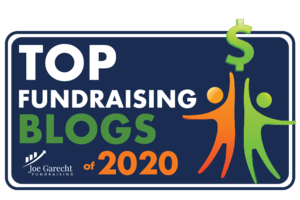Everyone wants to find the latest, greatest way to raise money. Everyone wants to raise more money. Fortunately, the secret way to raising more funds in 2013 is not complicated. It’s not expensive. It’s not revolutionary. It’s not even really a secret. But, it will work:
Get out from behind your desk more often.
I know you’re thinking, “That’s just common sense.” You’re right. However, at many nonprofit organizations, it’s not common practice. Consider this true story from my book, Donor-Centered Planned Gift Marketing:
During a seminar at an Association of Fundraising Professionals chapter conference, the director of development for a regional theater company asked a question: ‘Could I have some of our repertory actors cultivate our major donors?’
“The presenter initially thought this was a terrific idea. Theater donors often like to think of themselves as true patrons of the arts. The opportunity to interact with the actual performers would be meaningful to many of the theater’s major donors. The presenter mentioned this and asked, ‘How many major donor prospects do you have?’
“The answer was 50. The presenter then suggested that the director of development schedule appointments with the major donors and plan on bringing one of the actors with her. At this suggestion, the director of development exclaimed, ‘I don’t have time for that! I was hoping that the actors could go out on their own.’
“The presenter patiently responded, ‘If you visit with only two major donors per week, you will have seen them all within six months. And, not only will they have been cultivated by having the chance to interact with one of the actors, you will have developed a relationship and, in the process, learned more about the donor’s interests and philanthropic abilities. You will be well positioned to renew and upgrade their current support while being able to begin a conversation about planned giving. What could possibly be a better use of time?’
“While the development director was not pleased with the response, the reality is that the most effective fundraising happens at a coffee table not at a desk. Being proactive and actually talking with donors and prospects, understanding their needs, cultivating them, and asking for the gift is always the most effective development strategy.”
I understand that it’s not always easy to schedule another conversation with a donor or prospect. There are meetings to attend, reports to write, vendors to meet with, staff members to supervise, budgets to review, etc.
However, if you really want to raise more money, you will find a way to meet with more donors and prospective donors.
At one major university, senior staff thought that the major gift and planned giving professionals were spending too much time in their offices and not enough time meeting with donors and prospects. So, in a draconian move, the Vice President replaced the individual offices with a bullpen of unassigned desks and phones. He believed that if the major and planned gift staff did not have offices to “hid e” in, they’d be more likely not to stay on campus; instead, they’d be more likely to go out and visit donors and prospects.
e” in, they’d be more likely not to stay on campus; instead, they’d be more likely to go out and visit donors and prospects.
Most of the team got the hint and spent more time off campus. Other team members quit and were replaced with new staff who understood and accepted their role. The result: the school raised more money than ever.
I’m not suggesting that you need to get rid of your desk. I’m just saying you need to get away from it a bit more often.
Only 22 percent of Americans over the age of 30 say they have been asked for a planned gift, according to a report from The Stelter Company. How many of your organization’s supporters have you asked for a planned gift? What would happen to your fundraising results if you got out and asked twice as many folks, “What do you want your legacy to be?”
But, maybe you’re not a major gift or planned giving person. Maybe you feel comfortable behind your desk because you’re responsible for direct mail campaigns. Guess what? You can still benefit by getting out and talking with your donors and prospects. They can give you great stories you can share in your appeals. They’ll tell you what they like and don’t like about your fundraising letters. They’ll tell you why they support your organization. They’ll give you terrific, useful insights that will allow you to enhance your appeals.
If you’re a development professional, regardless of your position, you can benefit from spending more time with donors and prospects. In 2013, spend more time away from your desk and raise more money.
That’s what Michael Rosen says… What do you say?








